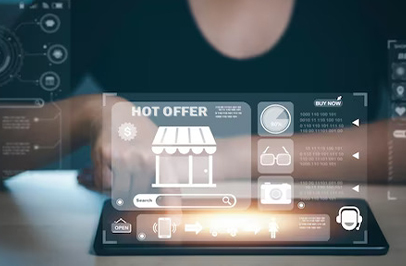

The world of e-commerce is constantly evolving and keeping up with the latest trends and technologies is key to staying ahead of the competition. One of the latest trends to emerge in the e-commerce industry is Headless Commerce. In this blog, we’ll take a closer look at what Headless Commerce is, why it matters, and the benefits it can bring to your business.
What is Headless Commerce?
Traditionally, e-commerce platforms have been built with a monolithic architecture, where the front-end (what the user sees) and the back-end (the data and functionality that powers the website) are tightly integrated.
This means that any changes made to the front-end or back-end can have a significant impact on the other.
Headless Commerce, on the other hand, decouples the front-end and back-end of an e-commerce platform, allowing them to operate independently of one another.
This means that the user interface (UI) and the content management system (CMS) are separate, allowing businesses to create a more flexible and personalized customer experience.
In a Headless Commerce architecture, the front-end is known as the "head," while the back-end is known as the "body." The head can be anything from a web application,
mobile app, chatbot, or even a voice assistant, while the body is the e-commerce platform's back-end, which manages product catalogs, orders, payments, and shipping.
Why Does Headless Commerce Matter?
Headless Commerce offers several advantages over traditional e-commerce platforms, including:
In a traditional e-commerce platform, the front-end and back-end are tightly coupled, which can make it difficult to make changes. With Headless Commerce, businesses can change their front-end without affecting the back-end, allowing them to experiment with different UIs and CMSs to find the perfect fit for their customers.
Personalization is key to providing a great customer experience. With Headless Commerce, businesses can create personalized experiences by tailoring their content and user interface to specific customer segments. This allows businesses to increase engagement and conversions by delivering more relevant content and offers.
Scalability is essential for businesses that want to grow. With Headless Commerce, businesses can scale their e-commerce platform by adding new heads (front-ends) or bodies (back-ends) as needed. This means that businesses can easily expand their product offerings or enter new markets without having to rebuild their entire e-commerce platform.
In a traditional e-commerce platform, making changes to the UI or CMS can take time and resources. With Headless Commerce, businesses can make changes to the front-end without affecting the back-end, allowing them to iterate quickly and bring new features and products to market faster.
Benefits of Headless Commerce:
Headless Commerce offers several benefits for businesses, including:
With Headless Commerce, businesses can create custom front-end experiences tailored to their customers' needs. This allows businesses to differentiate themselves from competitors by providing unique user experiences that are tailored to specific customer segments.
Headless Commerce allows businesses to create a consistent customer experience across multiple channels, including web, mobile, voice, and chat. This allows businesses to meet customers where they are and deliver a seamless experience regardless of the channel they use.
Headless Commerce is future-proof, allowing businesses to adapt to changing customer needs and emerging technologies. This means that businesses can stay ahead of the competition by providing cutting-edge user experiences that keep customers engaged and coming back.
In conclusion, Headless Commerce is a powerful tool that can help businesses create more flexible, personalized, and scalable e-commerce platforms. By dec